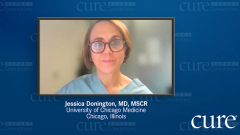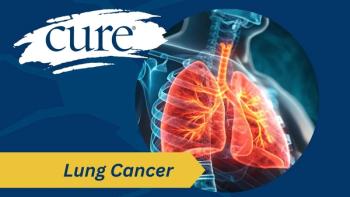
An Overview of Early Non-Small Cell Lung Cancer
Martin Dietrich, MD, PhD, and Jessica Donington, MD, MSCR, provide an overview on early non-small cell lung cancer and the available treatment options.
Episodes in this series

Jessica Donington, MD, MSCR: Hello, and welcome to CURE® Expert Connections. I’m Jessica Donington, professor of surgery and chief of the section of thoracic surgery at the University of Chicago in Chicago, Illinois. I would like to welcome my fellow expert panelist, Dr. Dietrich, to introduce himself.
Martin Dietrich, MD, PhD: Hello, I’m Martin Dietrich, a medical oncologist at Florida Cancer Specialists at the University of Central Florida in Orlando [Florida]. Thank you for having me today.
Jessica Donington, MD, MSCR: Today we’re going to discuss management of early-stage non-small cell lung cancer [eNSCLC]. We’ll address the treatment options for patients with early-stage non-small cell lung cancer, the role of adjuvant therapy in early-stage disease, and the role of the multidisciplinary care team in treating patients with early-stage non-small cell lung cancer. Let’s get started. Dr Dietrich, I’ll let you start.
Martin Dietrich, MD, PhD: I want to talk about early-stage non-small cell lung cancer. We typically define early-stage as patients with disease that is either surgically resectable or accessible by radiation in the earlier stages. Stage 1, stage 2, and stage 3, considered early; stage 4 then the late-stage disease. I have to say this is obviously a spectrum of different challenges from going from stage 1 to stage 3 and obviously, from surgery to more radiation approaches the higher the stage goes. It’s important to understand what your stage is and what the individual opportunities are for treatment. And there has been for patients that have had difficulties undergoing surgery either because of medical comorbidities or lung function problems, the introduction of targeted therapy, targeted radiation therapy in the early-stage setting. And then looking at lung cancer as a systemic disease, there's clearly a component of treatment that requires local approaches either by surgery or by radiation. But then there is a component that may not be able to see on the original imaging. But that certainly does require attention as well, because that microscopic or invisible disease is the part of the disease that eventually drives disease recurrence, metastatic manifestation, and eventually, death. Those are two different components of lung cancer that we’d like to discuss today.
Jessica Donington, MD, MSCR: When we talk about treatment for lung cancer, it usually starts by figuring out the stage because the stage help drive treatment decisions. As we talked about, we can go from early-stage disease all the way to metastatic. When we talk about the earliest stage of disease, stage 1, and especially those tumors in stage 1 that are less than 4 cm [centimeters], the recommended treatment tends to be surgery — removing the portion of the lung that contains the tumor of interest in those patients who have enough lung to tolerate surgery. For some patients who have significant medical comorbidities, lung disease, COPD, [chronic obstructive pulmonary disease] and things like that, sometimes we trade surgery out for radiation. In patients with tumors that are starting to get bigger, like tumors that are maybe 4 cm or more, maybe the size of about a peach or so, or those that have started to involve some of the lymph nodes in the lung, surgery is still the initial treatment of choice. But those patients have a pretty high risk of having their tumors come back. And therefore, we now recommend that those patients also get what we call systemic therapy, after their resection. Finally, once the tumor has spread to the lymph nodes in the center part of the chest, or called the mediastinum, that’s a big cross of the line for our patients. Once that is involved, then the treatments get more complicated. I would say they get pretty messy with lots of options and everybody getting different tailored treatment for not only themselves but for their disease. The rule for those patients, who have what we call stage 3 or locally advanced disease is that everyone needs a local therapy, and everybody needs a systemic therapy. And trying to put that puzzle together in 2021 is complicated. But we use things like how big the lymph nodes are, whether the lymph nodes are on the same side as the tumor or on the other side to help us make those decisions. Typically, if we are going to operate, surgery is not the first treatment. We start with some type of systemic therapy. When we’re choosing which patients can or cannot undergo an operation for the lung cancer, we use both the stage that we just talked about, how extensive is the tumor, how far has it spread within the chest or outside of the chest, and then we use the patient’s overall health. Ideally, removing a fairly big portion of the lung, maybe a third of the lung is a typical lung cancer operation, which does mean patients have to have good lung function because we would never want to leave someone short of breath or on oxygen after an operation. When we’re talking about those stage 3 patients, the ones who have lymph nodes involved, the discussion gets even more complicated — how much good lung is left, and again, how much can a patient tolerate?
Transcript edited for clarity.





